English Version
Hi there, hope you're having a great day,
There's a lot of work in the workshop and too little time to keep record of it. Come along to have a peek at that 6 projects that are on the making.
Golden Series
I'm glad to announce that the first instruments of the golden series are on the bench. It will take some time to get them done since these require lots of detailed work to get them done, but I had to start doing something about it. A lot of the wood was already cut and ready for work. I just needed the right mindset to start doing it.
Sound boards
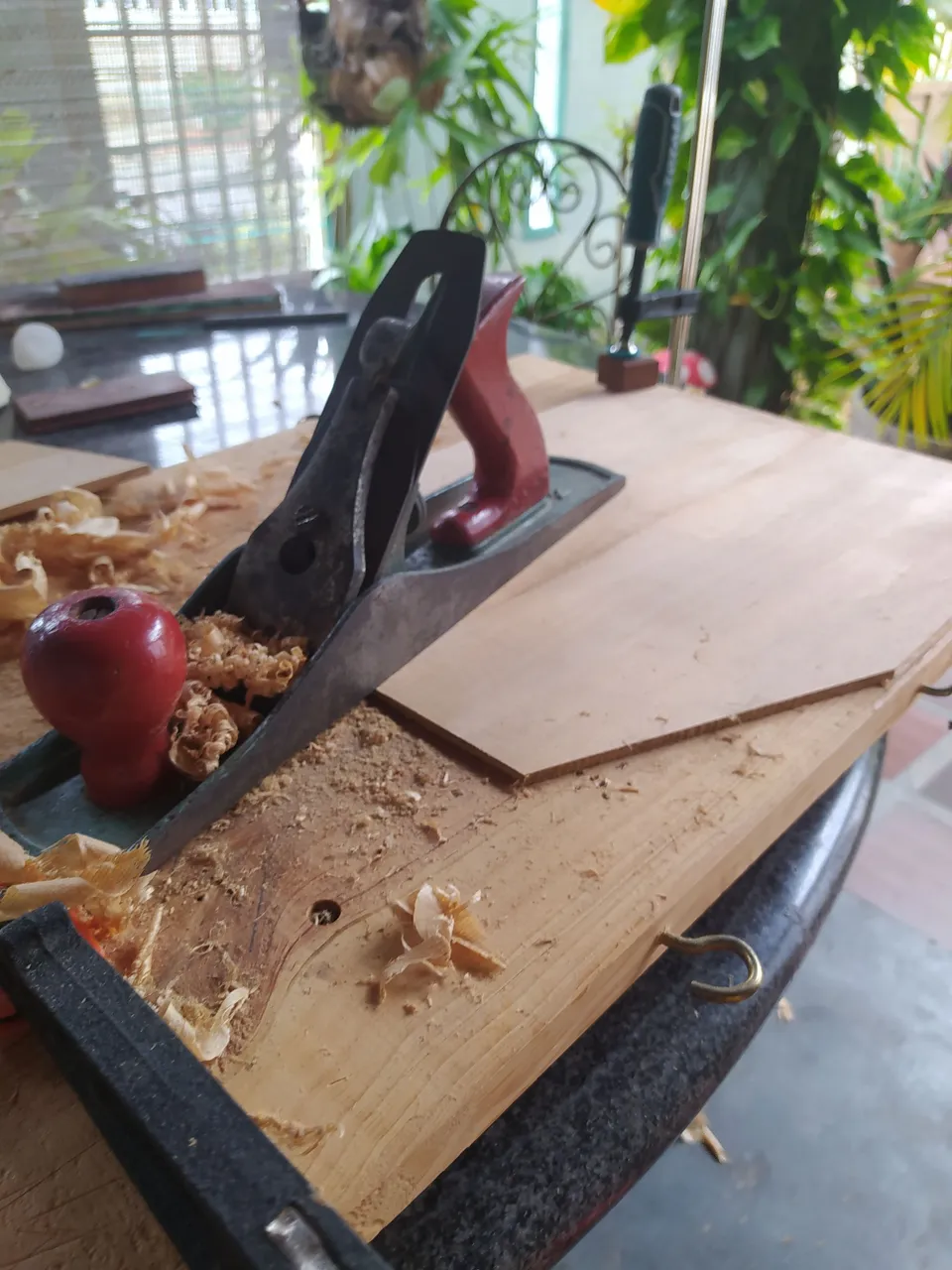
To some of the readers living abroad they might have the chance to finally recognize one of the woods I'm using. It's no other than Western Red Cedar (thuja plicata). This has some amazing sound qualities that favors medium and low frequencies. Instruments with this as their sound boards tend to have deep and rich sounds compared with the typical bright and clear of Spruce.
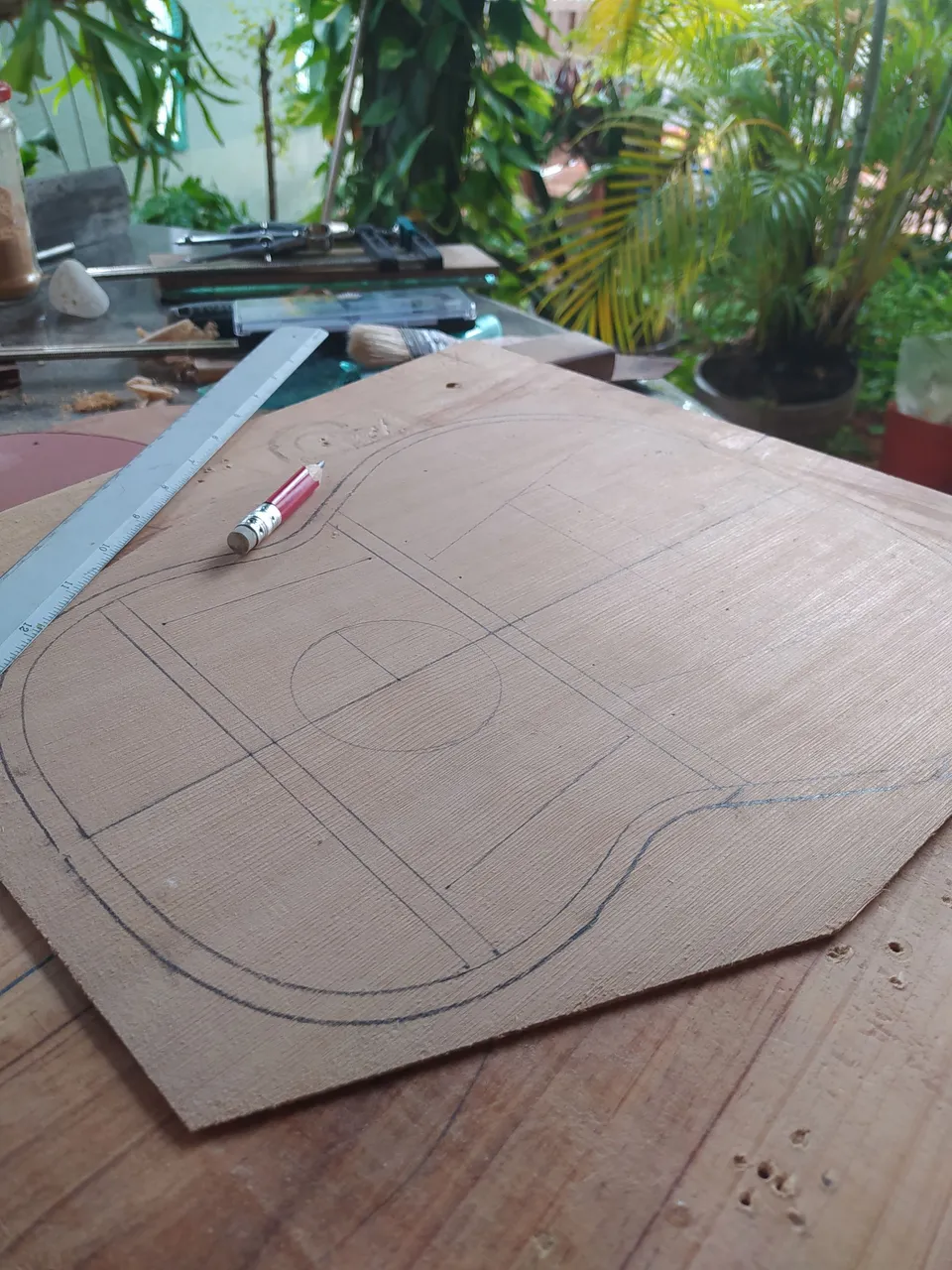
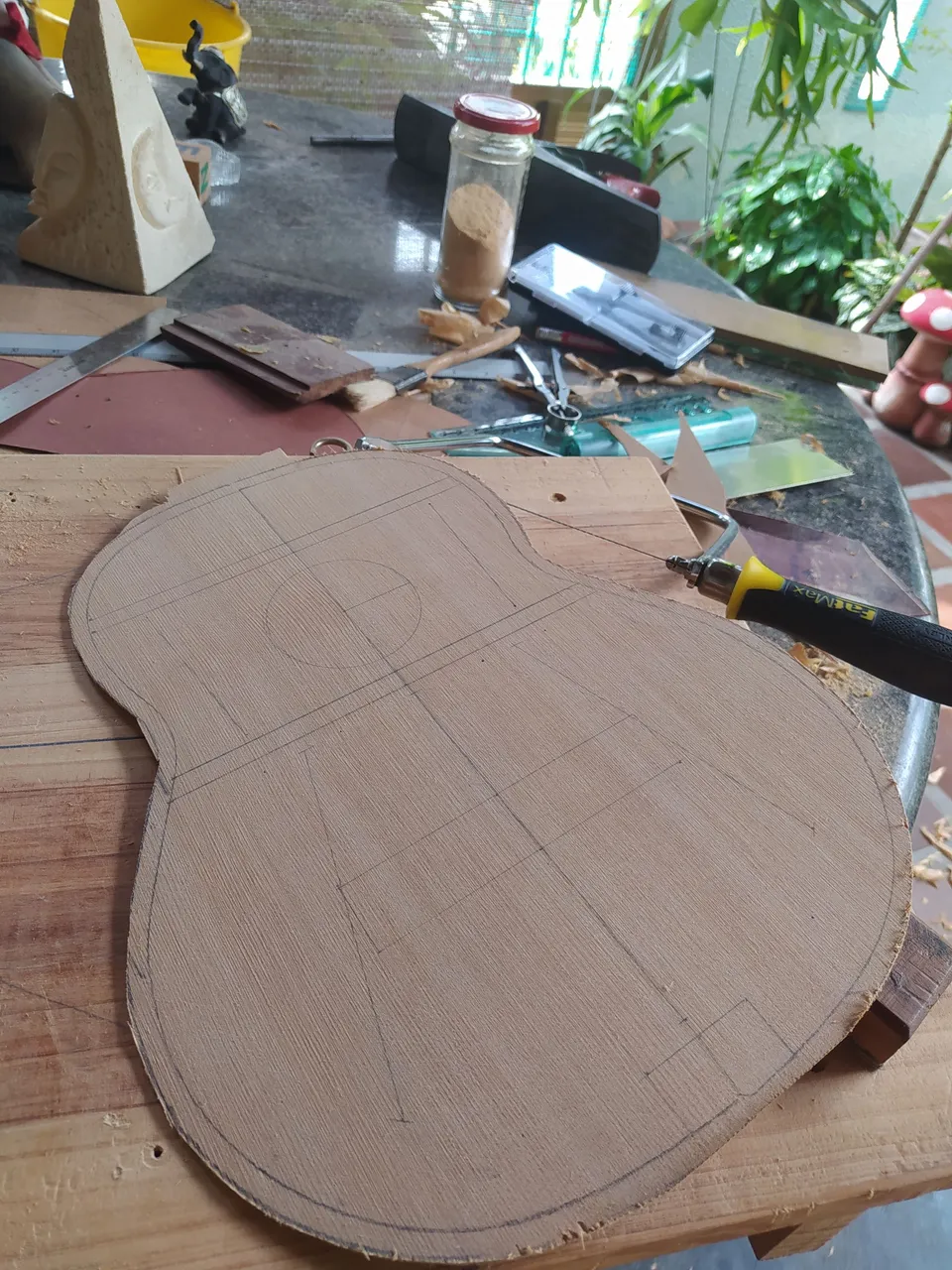
I still haven't made up my mind about the rosette situation, but there's plenty of time to get the works about the details and ornaments of these tops.
Backs and sides
As for backs and sides, I'm using regional materials. These are some species common in Latin America but they are proven to be great for luthierie. First, we have the yellowish orange Osage Orange. A hard wood and very resistant to fungi and pests. It also has a beautiful hue. I think it will get darker and oranger as it dries more. Secondly, we have Cordia Alliodora. This wood has tons of variants just in Venezuela. The main ones are called black and white. And wouldn't you know it, this is the white kind. The other is lighter in color. Don't ask me why. I don't know what's the criteria to regional names for woods.
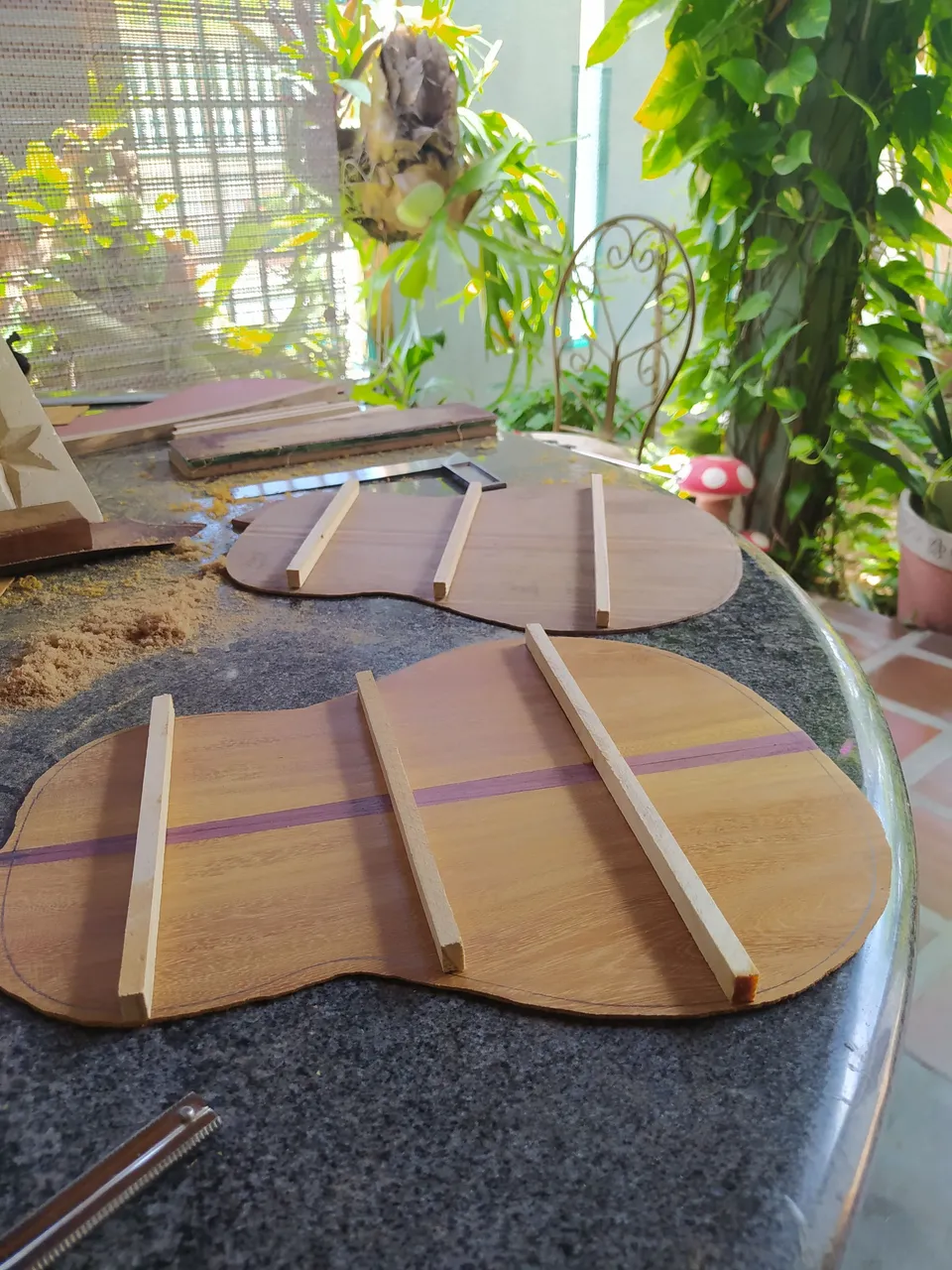
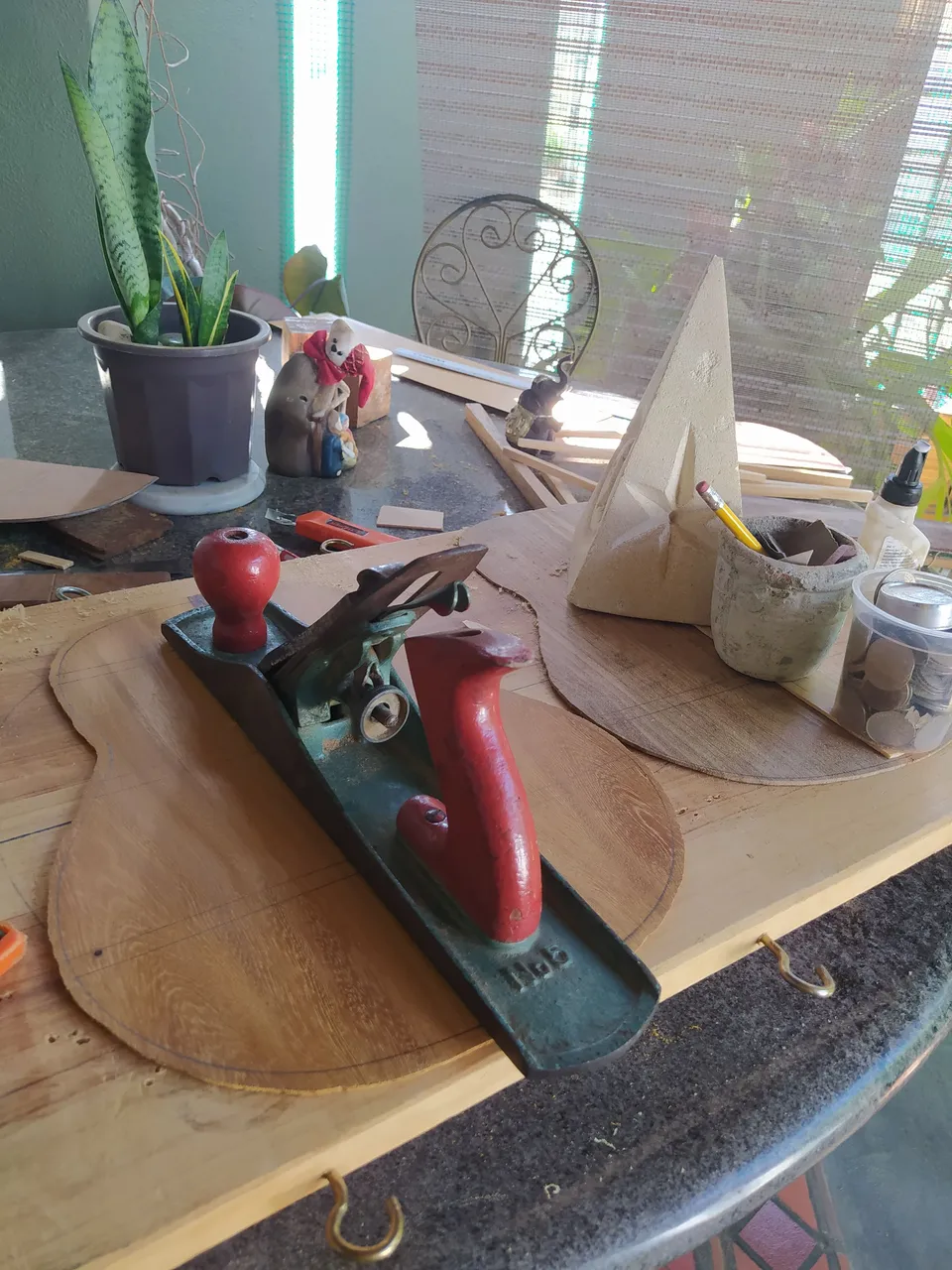
As for the works, Osage is tougher than Cordia. It has taken quite some time to get to an appropriate thickness to give it the 6000mm curvature radius. Nonetheless, it isn't a job some pacing and elbow grease can't achieve.
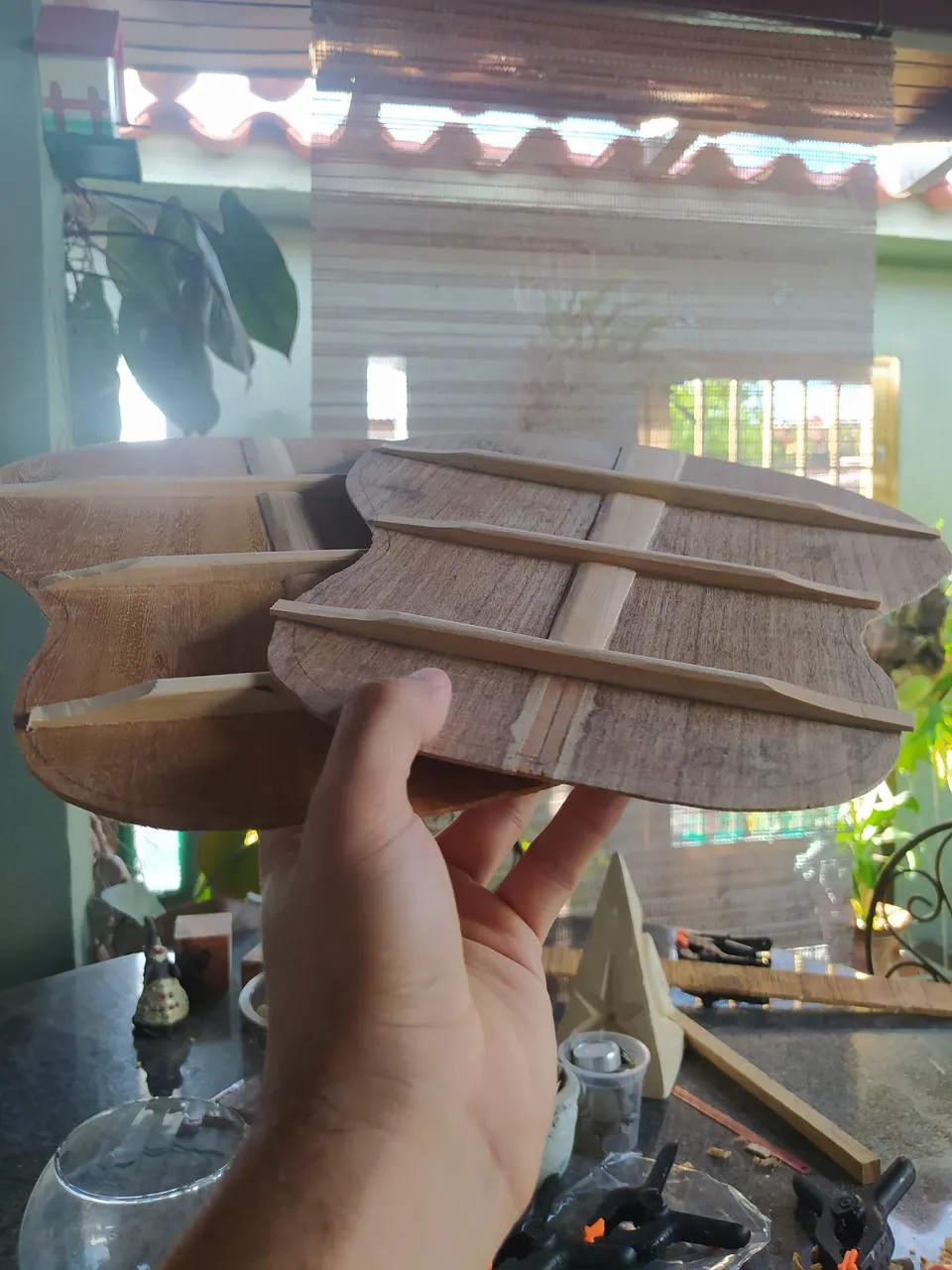
Other projects
There's some other timber waiting to be transformed into instruments. These will be the first ones of the Black Series, my mid tier instruments. All of them made in regional woods. All of these timber was acquired in a trade with a fellow luthier for the Venezuelan Plains. Around there the variety of woods is astonishing! There's a lot to choose and pick your poison.
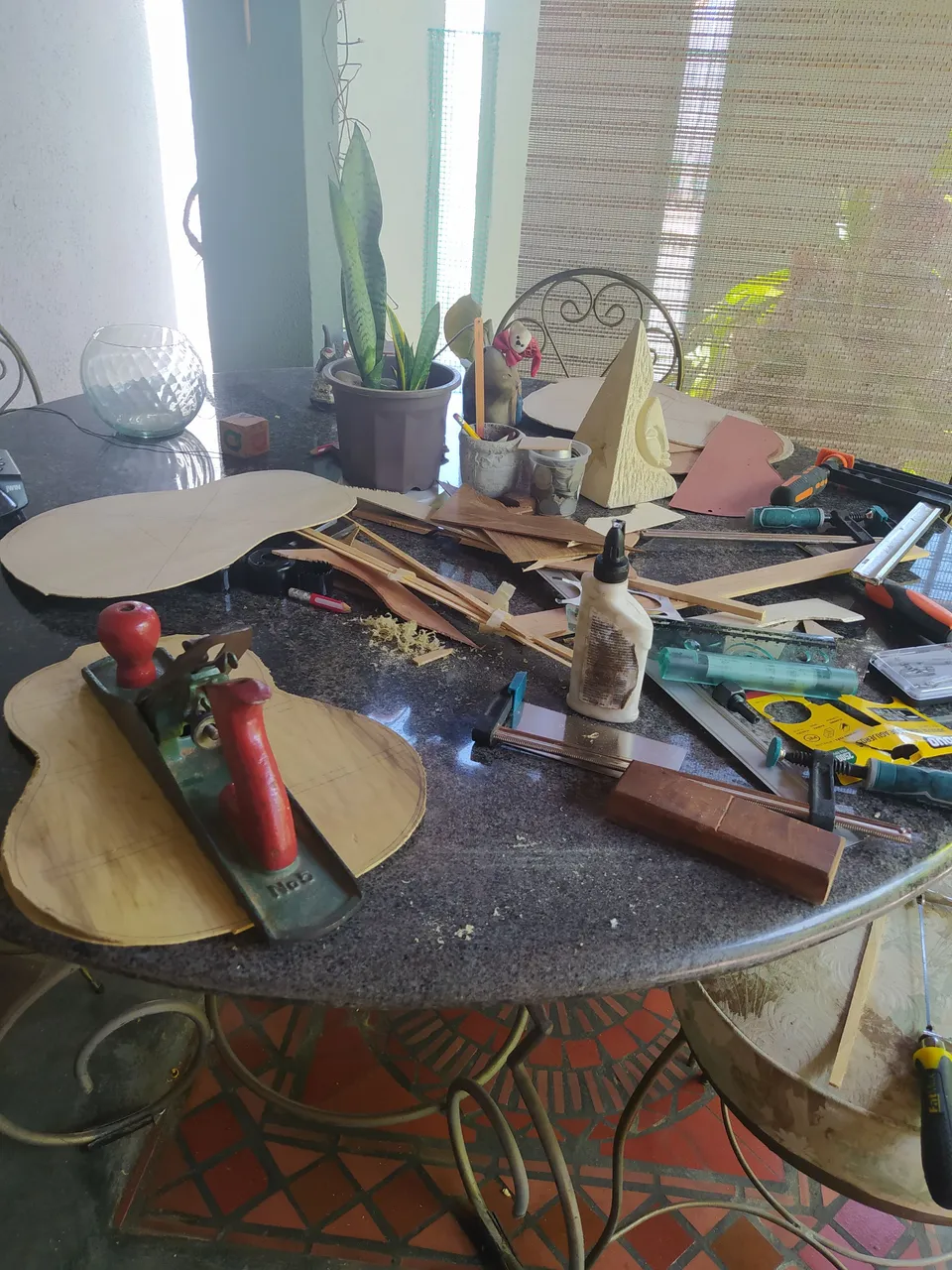
My bench (table) will look like a mess for quite some time until all of these instruments are ready for assembly. The woods used for tops in these category are Cedar (cedrala odonata), White Cedar (Simarouba Amara), and Melina (Gmelina Arborea). As for backs and sides there's variety in colours and species. We have Nectadra laceolata and Nectadra spp, and Tectona Grandis.
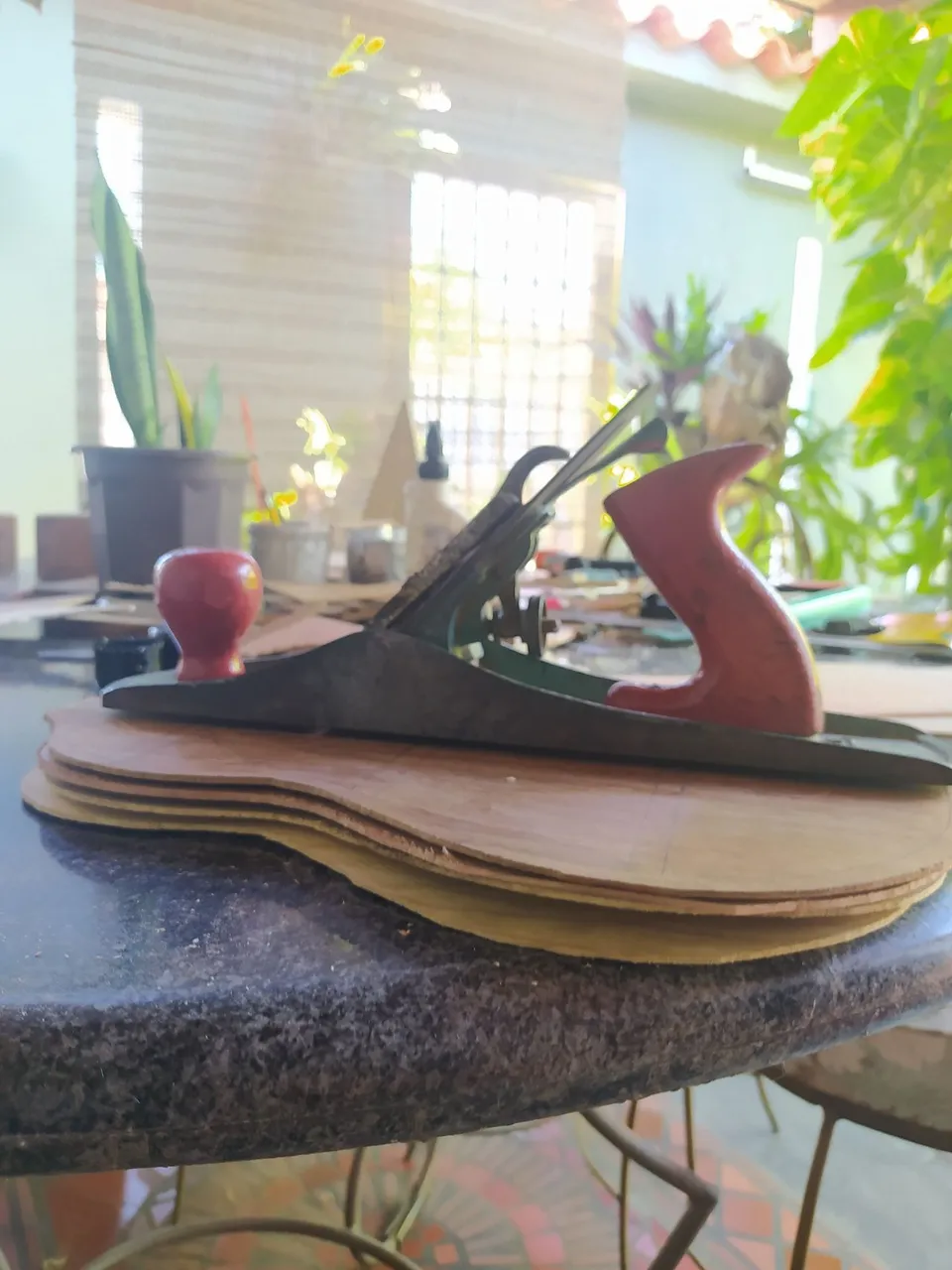
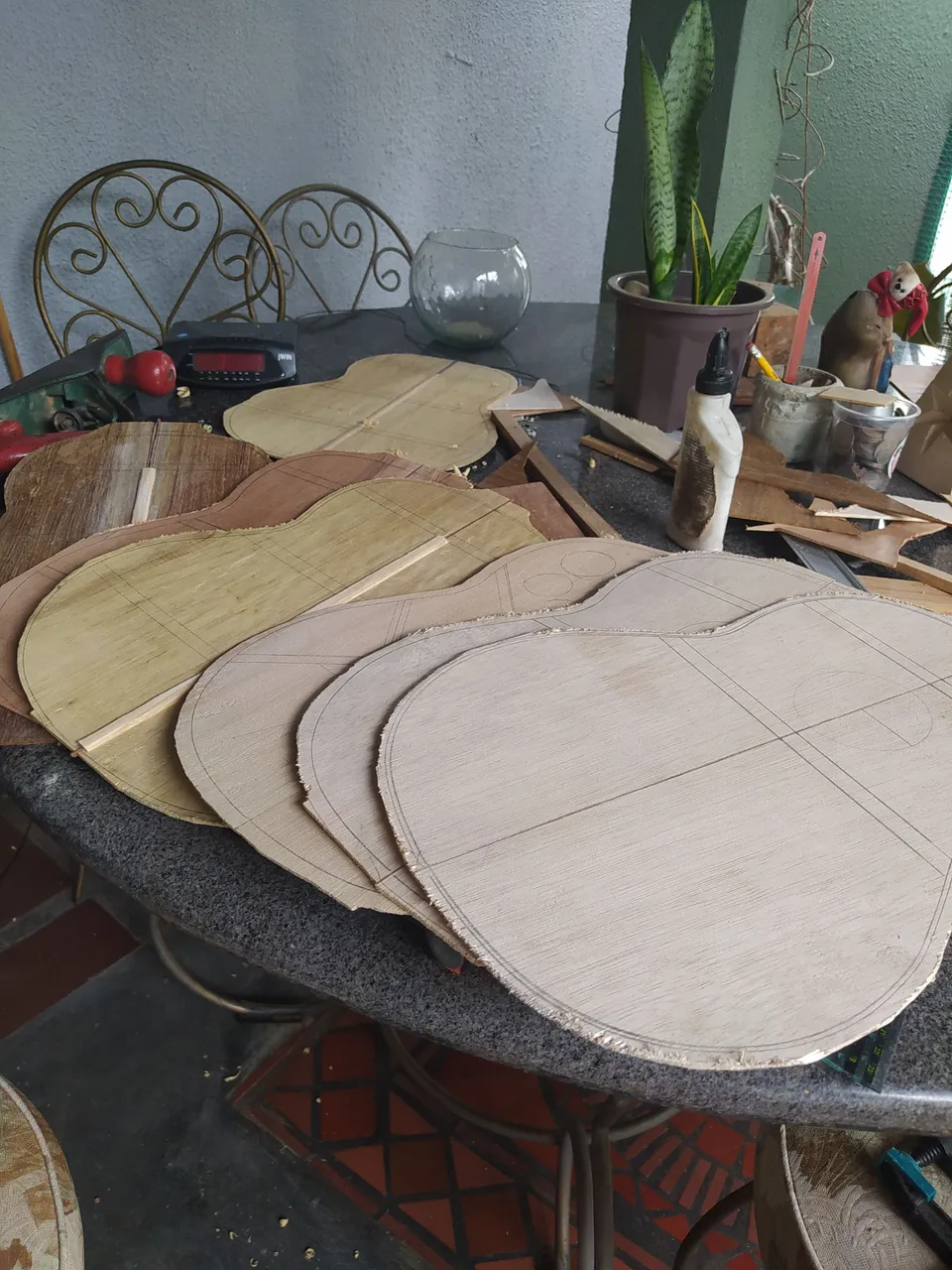
This will ensure not only the quality of the instrumenta but also their aesthetics. I'm excited to have all of them built!
An experiment
Among these instruments two are special. One will be an important experiment. I'm trying a different outlay for the sound board. It will look like this.
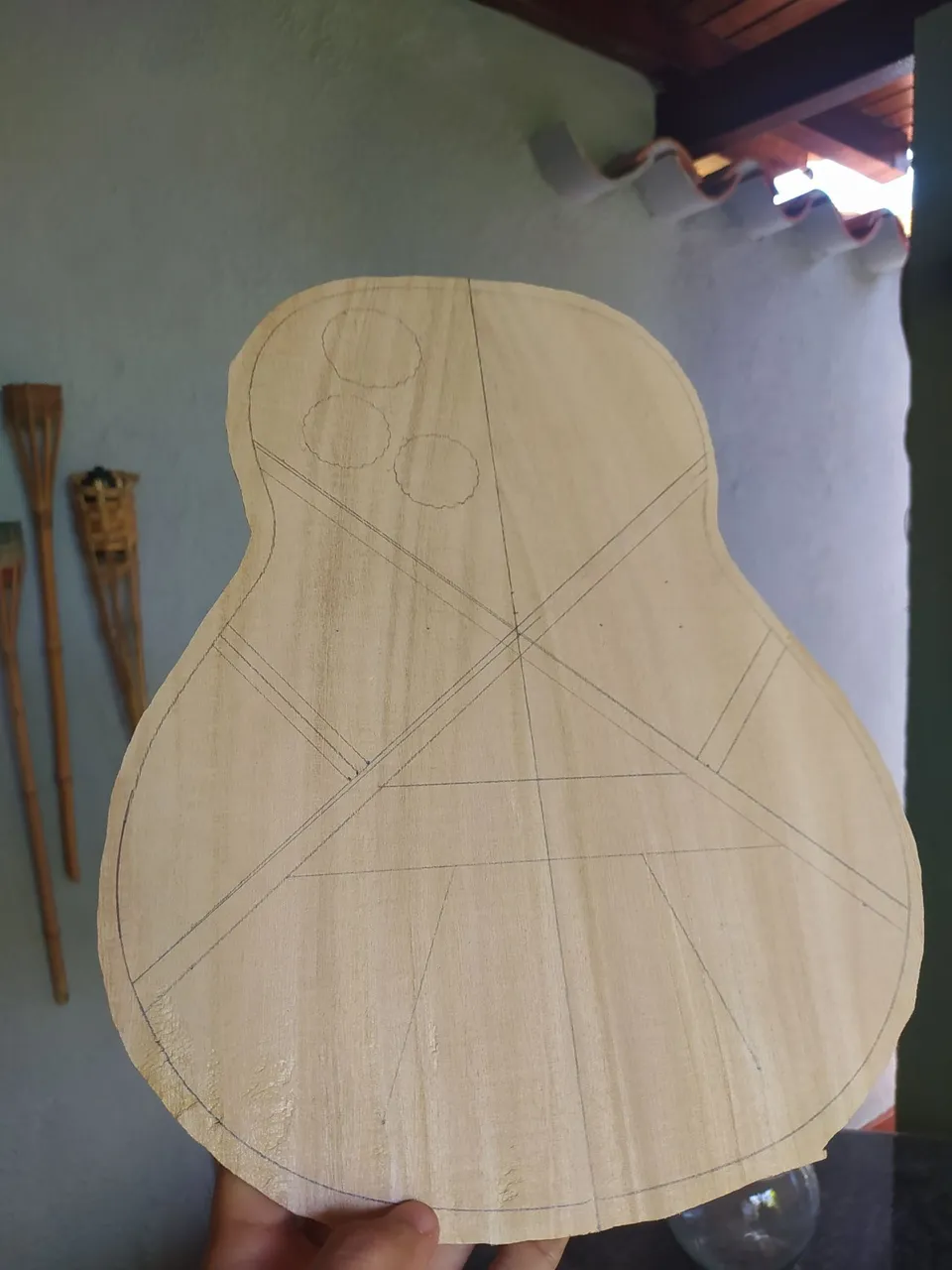
The first thing to notice is the additional sound holes. The pattern of reinforcements is different as well. I cannot tell what kind of sound this one will make. But that's the idea of experiments. I think another way of launching the world fame of the instrument comes in way of changing it's looks. I'll keep you informed about my works.
A gift
This is the other special instrument. It is a gift to the choir. It was a place of learning and meeting interesting people. It is also where I first became aware of the challenges of conducting a group of people to make music. As I started my journey into luthierie, I promised I would be making an instrument for the group. That way the don't have to rely on those instruments form El Sistema (a lot of which aren't good). And they will not need to ask for a borrowed instrument in a pinch.
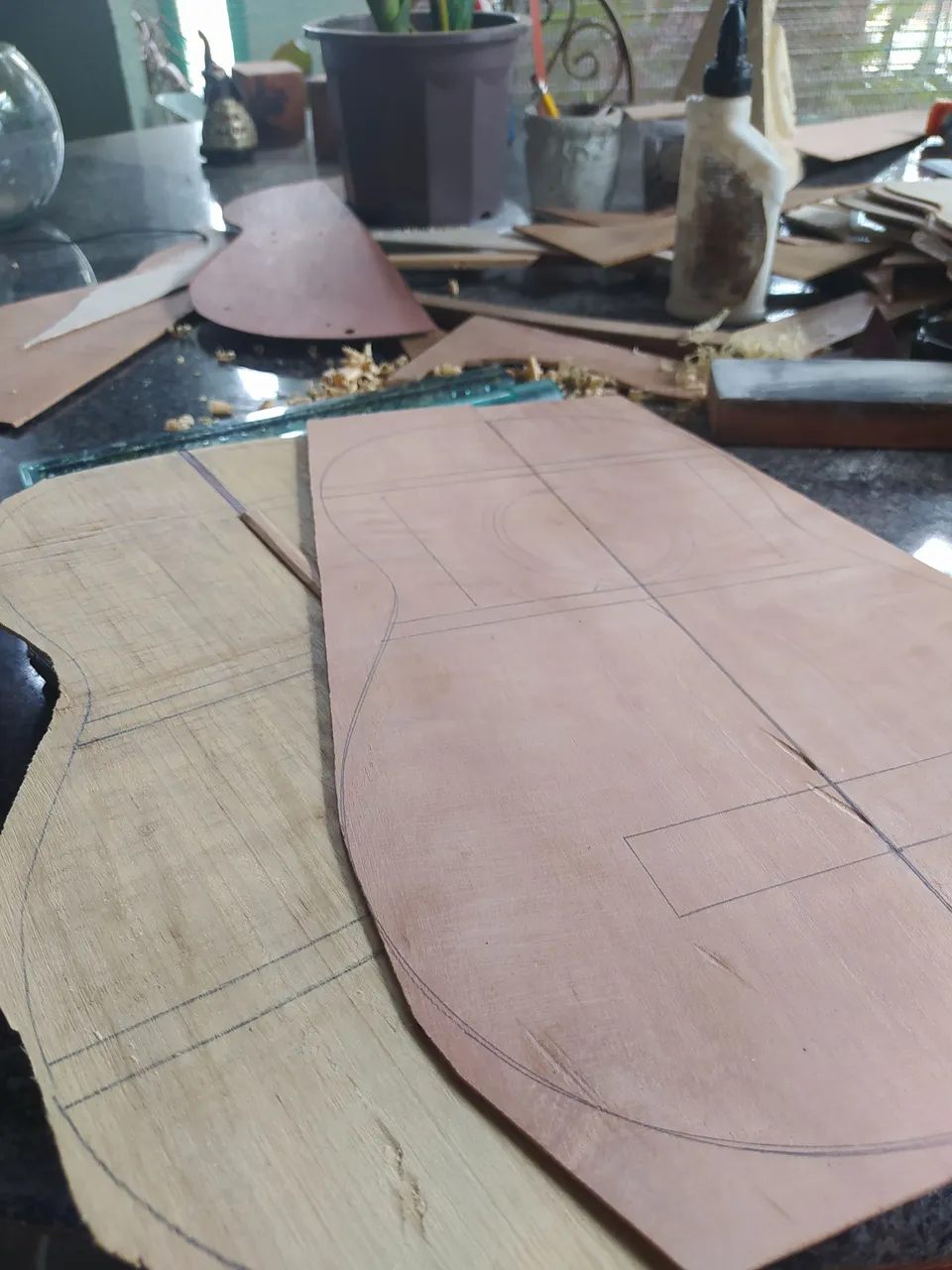
It will also be a beautiful instrument. I know the conductor worries a lot about aesthetics, so I tried to pick some beautiful woods to make the instrument as appealing to the eye as possible. All the pices of the body are flamed wood. So it will look gorgeous regardless of what I do with it.
That's been all from the workshop today! Stay tuned for new updates on these projects and more.
Versión en Español
Saludos, espero que tengas un gran día,
Hay un montón de trabajo por hacer en el taller y muy poco tiempo para contarlo todo. Pero me tomo un respiro para mostrarte 6 proyectos que están en proceso.
Golden Series
Estoy muy feliz de anunciar el comienzo de la primera ronda de cuatros de esta "serie dorada". Estos se tardarán un poco más debido a la cantidad de detalles y calidad se los instrumentos en general. Pero tenía que comenzar de una vez por todas. Mucho del material estaba ahí esperando a que lo llevara a la mesa. Solo hacía falta un ajuste de enfoque.
Tapas Armónicas

Para algunos de los lectores que se encuentran en otras tierras, quizá está sea el momento en que reconozcan algunas de la maderas que estoy utilizando. Es mi primer proyecto con Cedro Rojo Canadiense (thuja plicata). Está madera tiene unas propiedades sonoras increíbles que favorecen las frecuencias bajas y medias. Los instrumentos con tapas armónicas de este material tiene sonidos profundos y aterciopelados. Lo que da una clara diferencian con el brillo y timbre del Pino Abeto.


Todavía no decido qué hacer con las rosetas y el resto de los adornos, pero hay tiempo para diseñar algo elegante para estás tapas.
Aros y fondos
Los aros y fondos son de maderas regionales. Estas son agiunas de las especies que crecen en esta parte del continente y se ha demostrado su versatilidad en la lutheria. Primero, la Mora Amarilla (maclura pomifera). Está madera de tonos amarillos y naranjas es muy resistente a las pestes (hongos e insectos. También posee un color muy elegante. Y su tono se hará más oscuro a medida que la madera se siga curando. Después, tenemos el Pardillo (*cordia alliodora). Está madera tiene una buena cantidad de variantes en el territorio venezolano. Las más usadas son las denominadas negro y blanco. Se podrán sorprender al saber que este pardillo es del segundo tipo. El negro es de un tono más claro. Todavía no sé quién decidió que esto fuera así.


En lo referente a la facilidad de tabajo, la mora es mucho más dura que el Pardillo. Me ha tomado bastante tiempo rebajar las piezas a un grosor aceptable para dar la curvatura de 6000 milímetros de radio al fondo. Sin embargo, es posible hacer con un poco de trabajo duro y sabiendo como rendir el esfuerzo.

Otros Proyectos
Había mucha madera esperando pacientemente a convertirse en instrumentos. Estos serán los primero de la serie negra (Black Series), mis instrumentos de gama media. Todos estarán hechos de maderas nacionales. Está madera fue adquirida en intercambios con un amigo y colega de los llanos venezolanos. En esos lares es donde se encuentra la mayor cantidad de variedad en lo que respecta a maderas. Hay muchos tipos de donde elegir.

Mi espacio de trabajo se verá así de desordenado hasta que todas las piezas estén listas para ensamblar. Las maderas para las tapas armónicas serán Cedro criollo (cedrala odonata), Aceituno (simarouba amara), y melina (gmelina arborea). Para fondos y aros hay dos variedades de laurel (nectranda lanceolata y nectandra spp) y teca (tectona grandis).


Esto garantizará no solo la belleza de los instrumentos pero también su calidad. ¡No puedo esperar a que estén terminados!
Un experimento
Entre los instrumentos mencionados anteriormente hay dos especiales. El primero es un experimento. Quiero ver qué se logra con esta configuración en la tapa armónica.

Lo primero que notarán es la adición de más bocas. Este patrón de refuerzos es diferente también. No puedo saber qué tipo de sonido tendrá este instrumento cuando esté listo. Sin embargo, creo que otra manera de hacer un instrumento más atractivo radica en cómo se ve. Los mantendré informados del progreso.
Un regalo
Este es el segundo instrumento especial. Es un regalo para el coro. En esa agrupación aprendí muchas cosas que ignoraba sobre la música. También fue el lugar donde aprendí sobre los desafíos de la dirección de una agrupación musical. Cuando comencé mi trabajo de luthier, me prometí hacer un instrumento para el coro. Así no tendrán que depender de los instrumentos de El Sistema o de tener que pedir un instrumento prestado.

Además, será un instrumento hermoso. Sé que al director le gustará este detalle. Se preocupa por la estética. Por lo tanto, me enfoqué en buscar qué madera combinaban mejor para este proyecto. Toda la madera de la caja será flameada. Así que la belleza está garantizada sin importar que se haga.
¡Esto ha sido un adelanto de todo lo que se está llevando a cabo en el taller! Ya vendrán más actualizaciones sobre el progreso de estos proyectos.
All photos used in this post are mine unless it has a source.
Todas las fotos en este post son de mí propiedad a menos de que se indique lo contrario
